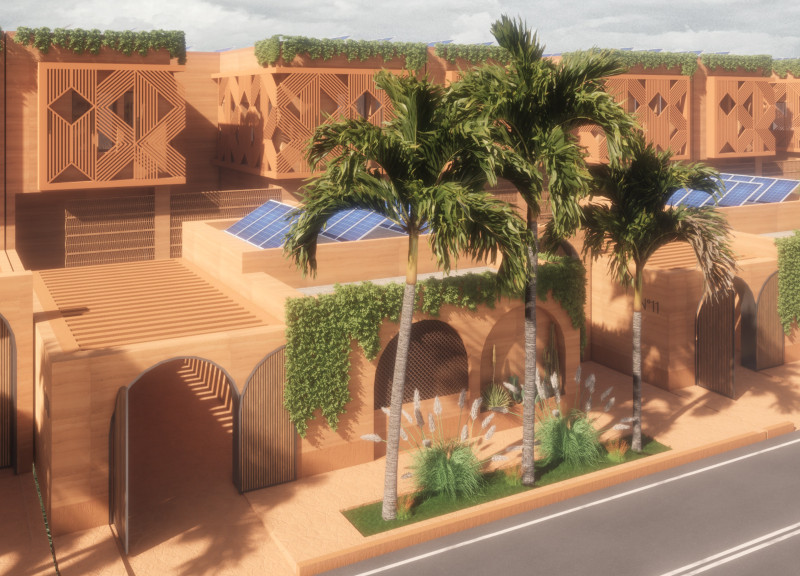5 key facts about this project
The design embodies a clear conceptual framework, prioritizing sustainability and user engagement. The building's exterior presents a harmonious relationship between natural materials and modern construction techniques. Recognizable features include a façade that utilizes locally sourced materials, which not only reduce the carbon footprint associated with transportation but also resonate with the surrounding landscapes. The thoughtful choice of materials, such as high-performance glass, timber, and concrete, contributes to the overall effectiveness of the envelope in terms of energy efficiency and thermal comfort.
Functionally, the project is designed to serve multiple purposes. It accommodates both public and private spaces, fostering interaction while offering areas of tranquility for reflection and individual activities. The layout is meticulously crafted to enhance flow and accessibility, ensuring that each space is utilized to its fullest potential. Open-plan areas encourage collaboration and social interaction, while dedicated zones provide opportunities for quiet contemplation or focused work.
A unique aspect of the design approach lies in its incorporation of biophilic elements. Large, strategically placed windows invite ample natural light into the interiors, creating a sense of connection with the outdoors. Green roofs and vertical gardens further enhance the visual and environmental quality of the building, promoting biodiversity and contributing to a micro-climate that benefits both inhabitants and local wildlife. This attention to environmental integration not only supports the building's sustainability goals but also enriches the user experience, offering a serene atmosphere amidst the urban landscape.
The architectural idea extends beyond mere aesthetics; it initiates a dialogue between the structure and its environment. The design considers sightlines and building orientation, ensuring that views of significant landmarks are preserved while also creating inviting public spaces that enhance community engagement. The blending of indoor and outdoor spaces encourages users to interact with nature, underscoring the project’s role as a facilitator of community connection.
Detailed architectural plans and sections provide further insights into the meticulous planning involved in this project. These documents illustrate the spatial relationships and material choices in a manner that highlights the careful consideration given to functionality and user experience. The sections reveal the layering of spaces, further informing how the building will be navigated by its users.
The architectural design exhibits not only a commitment to innovation and sustainability but also illustrates a respect for the cultural and environmental context in which it resides. Every element, from its material composition to its spatial organization, reflects a desire to enhance the human experience while preserving the integrity of the surrounding ecosystem.
As you delve deeper into the particulars of this project, consider reviewing the architectural plans, sections, and other design elements for a comprehensive understanding of the architectural ideas at play. Exploring these aspects will provide valuable insights into how this project challenges traditional architectural norms and embraces contemporary practices.


























